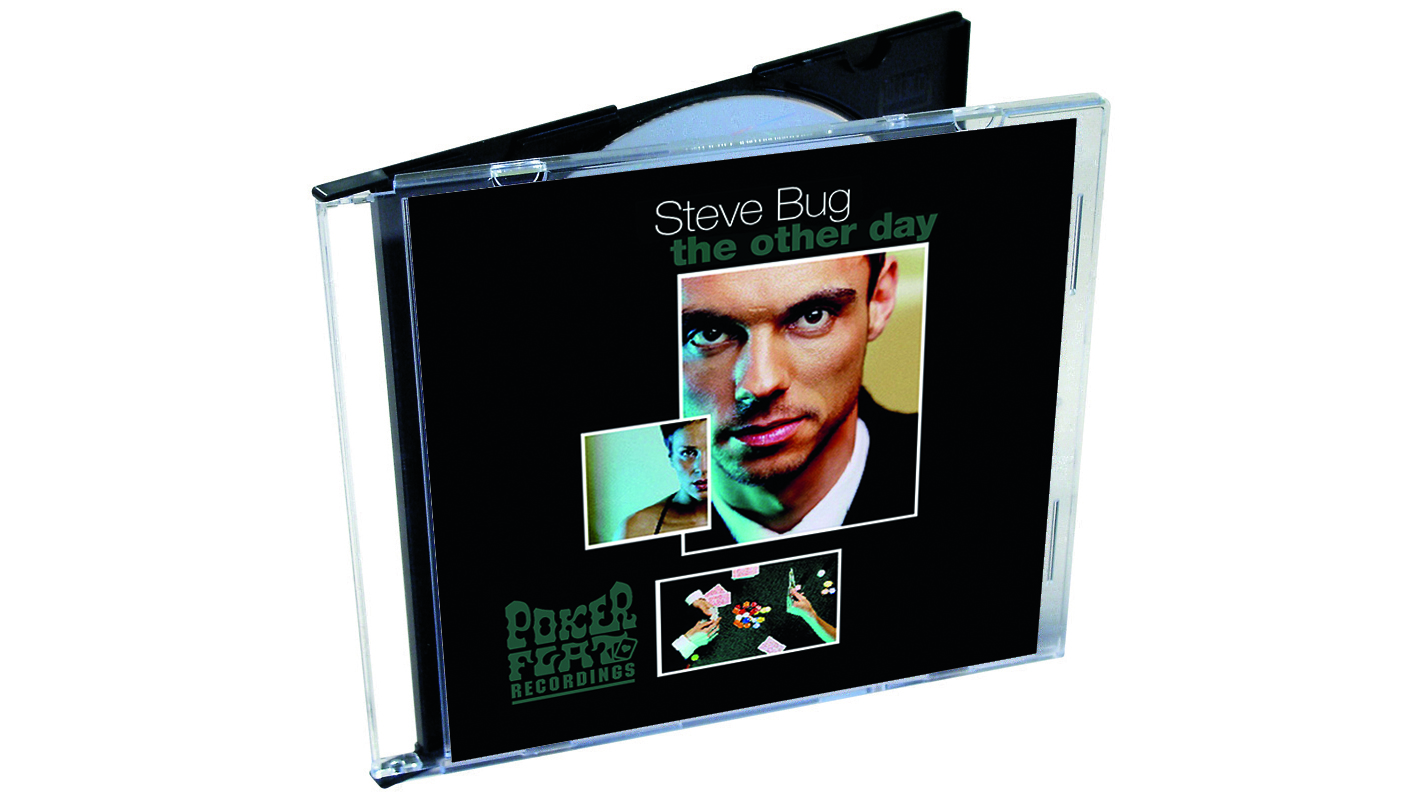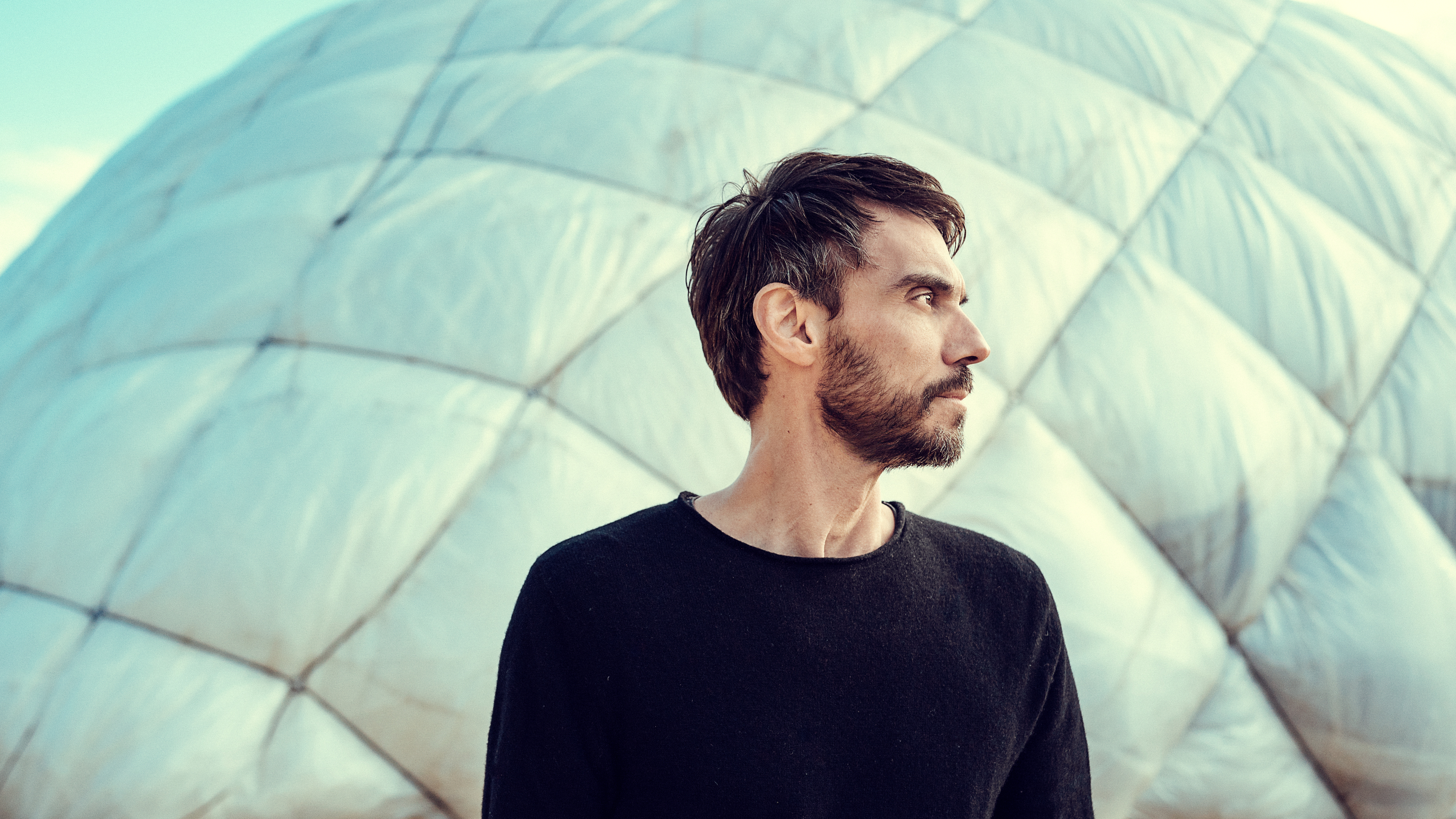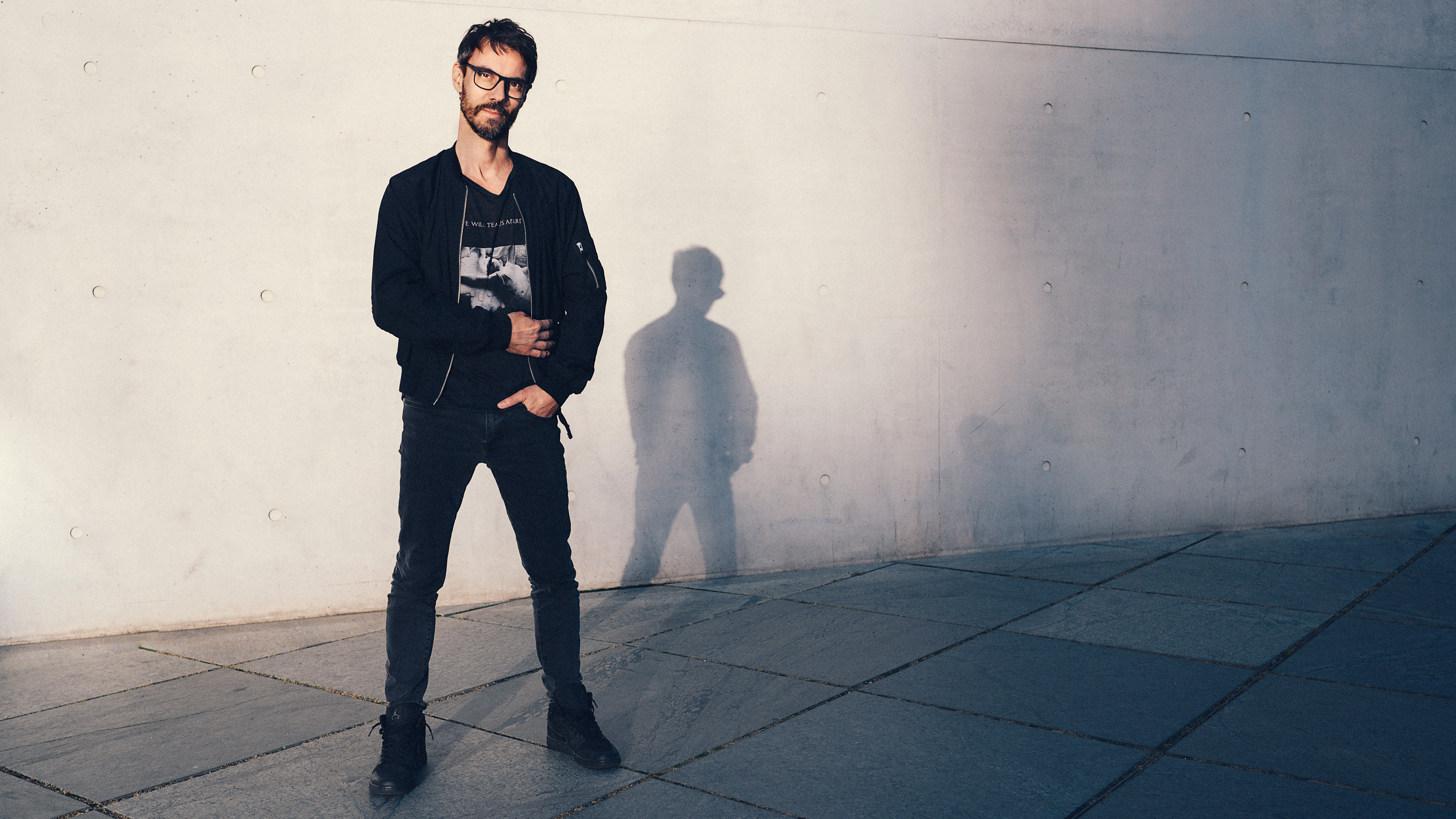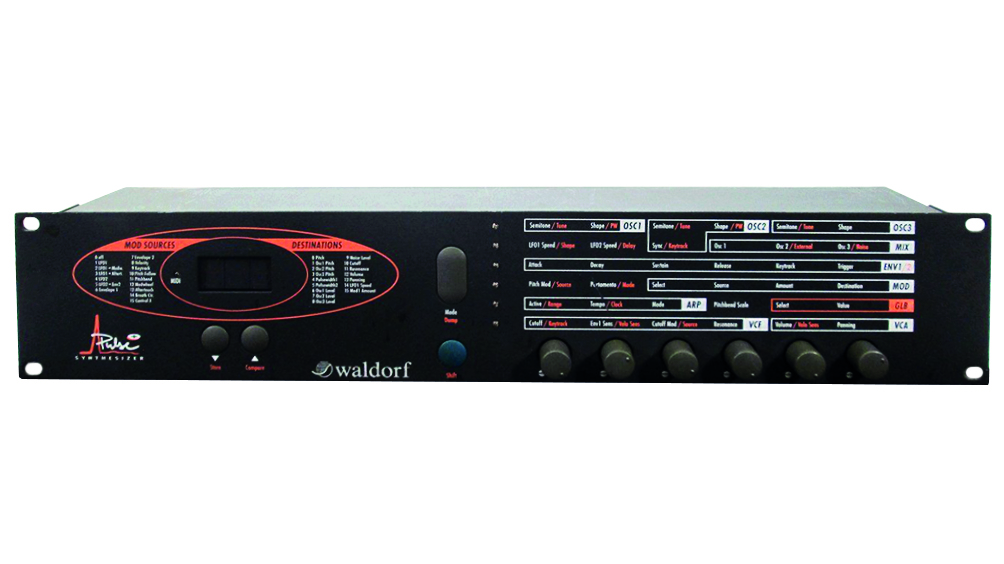Classic album: Steve Bug - The Other Day
Steve Bug talks us through The Other Day track by track

Steve Bug’s third album, was definitely a tale of two cities. Work began in Hamburg, where he was living at the time, before he took the plunge and relocated to the dark lights of Berlin.
“Tracks like Loverboy and Soulin’ Deep were done before the move,” he says. “They have more of that deep house Hamburg kinda vibe. But, when I got to Berlin, I got more into being techy and minimal and much more experimental.”
Digging deep into the underground scenes of the German capital, Bug’s music started to soak up a new kind of atmosphere.
“Before, I was making this classic, soulful and jazzy stuff,” he says. “Hamburg was clean, and had space – I lived near a park! And there were old people walking around [laughs].
“But, if you looked at Berlin at the time, in the mid-’90s, you had houses that were grey and dark, with bullet holes in the walls. It could be depressing. Especially in the winter. And that vibe influenced the sound of the album.”
Hunkering down with his samplers and record collection, Bug started to micro-chop loops, and rework riffs across his keyboards. And, fresh to the city, he didn’t have the luxury of contacts to call on, or vocalists to collaborate with. So, he built his tracks from snippets of samples, and vocals recorded off the TV.
“There was no internet,” he says. “It was very difficult to find someone to do vocals for you, back then. For tracks like Cocaine, I taped stuff from documentaries. It seemed like a very good, and free, source for samples.”
Get the MusicRadar Newsletter
Want all the hottest music and gear news, reviews, deals, features and more, direct to your inbox? Sign up here.
This economic approach ran across the album, with tracks being pruned, and relying on a few strong and simple ideas, which made it all the better.
“I was looking for something hypnotising, in a way,” he says. “Some way to keep you in the track. With a lot of music, so many things get built up so the stories are too big. It’s good to strip things back. That approach was influenced by the city. Just by being here.”

Track by track with Steve Bug
Loverboy
“This was sample-based – it’s where I was coming from. I took a small percussive sound from this one particular record, and built the groove from there.
“The bass started as a much longer acid line that I’d also sampled, and then cut down into a much smaller loop. It was pulled from another project that wasn’t going anywhere. I just tried it out over these new drums, and suddenly it all made sense.
“Then I sampled this backwards piano, and played it the right way around and pitched it up and down and stuff – all the kind of things you’d do with samples. Then, suddenly I had this track. I added this vocal sample that was lying around, and it all just happened.”
The Truth
“This track was influenced by a lot of old school hip-hop, which I was listening to at the time. And, when I was younger I loved all the Wild Style and breakdance stuff, then I went on to the early Missy Elliot stuff. So, that’s why some of the album has this break-y stuff on it.
“I was just trying to do some other types of beats, rather than straight 4/4 tracks. It’s a problem of today. Most people who write electronic music only listen to electronic dancefloor tracks. It’s kinda missing the diversity.
“I was always listening to other stuff, and experimenting with grooves and tempos. Especially for the albums, as you have the space to.”
White Times
“[Laughs]. The bassline in this was inspired by a Boney M record playing on the radio, and I was listening going, ‘Wow! This bassline is great’. And I sat down in the studio and thought, ‘Hmm. Something like that could be nice here’.
“So, I messed around, and played a similar bassline and added the White Times sample to it. It was cool, but then the track went into a completely different direction! But, yeah, the influence came from a stupid Boney M track.
“This one also has an electro feel, as well. I really liked that era.”
At The Front
“This was all based on samples, pretty much. I sampled some records from the early house days. Things that I listened to when I first started going out to the Front club in Hamburg. That’s where the name of the tune comes from.
“I usually don’t like to sample whole phrases. I prefer to take it down to one note, and then play with that note on the keyboard. You might keep the original feeling of the track, but you can take it in totally different directions, rather than sampling the whole loop and trying to build something around it.
“A lot of people do, and it can sound great. But for me, artistically, I think it’s not that interesting.”

Rhythm Divine
“This is built around one very noisy frequency sound from the Waldorf Pulse. I’d just bought the machine, new, and started playing with it for this track. Then I built everything around it.
“I think that was kind of the typical sound, back then, for my tracks. They sounded pretty ‘dry’, as I didn’t have many effects to add to them. Maybe something from the JD-800. Or I would sample FX from my records.
“I just didn’t have the money to buy effects. In general, it was just very hard to set up a studio with all the gear you needed, back then. But, I liked the sound it gave me, anyway. So, I didn’t feel like I needed to buy any more.”
Switch
“This is slower: that hip-hop influence. I’d take samples from those types of records. Then reverse kick drums, and build up a groove from there.
“The keys are a good example of the stuff that I’d get from sample CDs, too. Nowadays, if you were to write a house tune you would buy a House Samples pack, or something like that. Back then, there was only a few sample CDs, for a start. But, we were mostly buying CDs that were from different styles of music. We were always looking for sounds from other genres.
“The ones in this track, like the piano samples, were from R&B compilations. I added those, and then everything else in this track was built around that, and the beats.”
Electric Blue
“Ah, yeah. This is a typical ’80s Hi-NRG kind of thing. I always loved that sound. [International Deejay] Gigolo Records was kicking off at the time, and there was this whole ‘80s sound revival going on, with the basslines and the bleeps.
“It was a time where there was a lot of great records that tried to sound like they had that vibe. I think I felt like I needed to try and do something like that myself, as well. And this is what I ended up coming up with.
“The bassline was the easiest part of it. You can’t really write too many tracks with this kind of style. But when you do, it’s quite fun and very easy to write.
“That kinda music has just such a great energy, you know? It’s always uplifting, somehow.”
The Spray
“This is another one that has that electro approach. At the time I was playing a lot of different styles in my DJ sets, and playing that stuff.
“Back then, there was a lot of Aux 88 records and other things in that vibe coming out from Detroit – just lots of great tracks in that electro genre of break-y beats. It’s funny, too, because now I think it’s coming back in style…
“The track name actually came from when I was on the way to Australia, and they sprayed us in the cabin, to kill the flies or whatever [laughs]. I had a great first tour in Australia, that year. So, this was in honour of that.”
Cocaine
“This has an old blues-y vibe, with the guitar. And is, again, based mostly on samples. I’d found this police siren sound to use, recorded from a documentary – I sometimes sampled the TV or DVDs. I remember connecting my DAT to the TV or VHS player or something to record sounds of vocals or dialogue from shows.
“Then I found another sample about cocaine from a documentary. So, I put that sample about cocaine together with the police samples, and it made this kinda drug bust story [laughs]. It was a fun track to make.
“The bassline was from one of synths I had, for sure. But, the other things were sample-based. By this point I was using an E-MU and it had quite a bit of sample space."
So I
“The guitar is sampled from one of my favourite bands, but I don’t want to name them [laughs]. It’s just one sound that I used at the beginning of the record. It kinda set the tone for the track, and I just built all the other things around that.
“To me, the tracks just seemed to fall into place. I would load in samples from the disks and just check what was fitting, and what wasn’t. It’s more like a puzzle kinda game, for me.
“I would sometimes catalogue and label my sample disks so I knew what was on them. So, one might say ‘Roland 505’ or ‘Roland 909’, or something like this. And then, other times, I would store things by tracks. So, ideas and samples on each disk for each song.”
Soulin’ Deep
“This was probably made before the album started and I’d moved to Berlin, like the track Loverboy. It sounds very ‘Hamburg-ish’.
“The piano is also from another great record. [Laughs] I won’t say where from. I only used two of the notes from the whole line, though.
“In general, I like setting things in loops and then repeating them in a different way to the original version. I like those records where people sample disco tracks, and instead of using the full loop, they shorten it, and open it up a little bit.
“I used some chords, and then started building everything around that. Even at that early stage, I found it really hypnotic. Just the two notes in repetition…”
Cheesy Krust
“This is another one that was inspired by hip-hop, and also a lot of the ‘downbeat’ stuff out at that the time. I was listening to a lot of that.
“I sampled some saxophone for this one. Again, I didn’t use the whole phrase, just a small part, and then tried to play a new riff with it.
“It’s quite difficult, with saxophone samples, as it can sound too ‘sampled’ and weird. Here, it makes sense, to me at least. I really liked it. And then there’s a guitar sound going through the ‘wah-wah’ on the E-MU sampler. The E4X had some amazing filters.
“I just dug out the E-MU recently. My friends say I should use it again. It did have a really cool sound. I really liked this at the time, and I do still miss it.”

In the studio with Steve Bug

“I was probably using the Atari 1040 ST to make this album. I moved to a Mac after. You couldn’t do much with it, apart from sequencing. I was also using [C-Lab’s] Creator, at the time, which was more of a page-based thing. I still think the same way when I work with music, today. I kinda liked that. You could change things and do it in the patterns.
“I had a sampler. I started with an [Akai] S950, when I first began making music. Then, by this time, I would have had an E-MU sampler – the E64X, I think.
“Then the Waldorf Pulse+ was definitely one of the synths I had. Then I had a Nord Lead. It was either the One or Two. Not sure, but definitely one of the Nord Leads. I probably also had my [Roland] JD-800 with me. I sold it at one point, but think I was using it here. That’s pretty much all the gear I had.”


Future Music is the number one magazine for today's producers. Packed with technique and technology we'll help you make great new music. All-access artist interviews, in-depth gear reviews, essential production tutorials and much more. Every marvellous monthly edition features reliable reviews of the latest and greatest hardware and software technology and techniques, unparalleled advice, in-depth interviews, sensational free samples and so much more to improve the experience and outcome of your music-making.
"Reggae is more freeform than the blues. But more important, reggae is for everyone": Bob Marley and the Wailers' Catch a Fire, track-by-track
“Part of a beautiful American tradition”: A music theory expert explains the country roots of Beyoncé’s Texas Hold ‘Em, and why it also owes a debt to the blues










